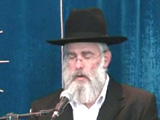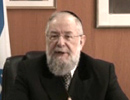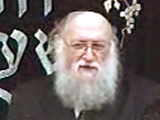Beit Midrash
- Torah Portion and Tanach
- Bereshit
- Vayigash
- Sections
- Chemdat Yamim
- Parashat Hashavua
The Shulchan Aruch (Even Haezer 17) says that, Rabbinically, we are not able to rely on rov (indication based on majority) as proof of a husband’s death so that his wife can remarry. For example, one who was known to have been on a ship that sunk in water "whose ends cannot be seen" and was not found thereafter cannot be presumed dead, even though a majority of people who are in such a situation and are not heard from are dead (see Yevamot 121a). However, it is possible to rely on a siman muvhak (a particularly convincing sign) to permit the wife. For example, if an otherwise unrecognizable body was found on shore near the shipwreck with six fingers on its hand, when the husband had six fingers, we can permit the presumed widow to remarry (Shulchan Aruch ibid. 24). Most contemporary poskim rule that one can rely on identification based on DNA of a deceased who was found, a fact that was used in permitting some of the widows of the Twin Towers.
Regarding determining one’s status as a Jew, it is possible to rely on rov (see Pesachim 3b and Yevamot 47a and Tosafot ad loc.). Thus, by comparison, it is clear that one is allowed to rely on a siman muvhak for determining Jewish status. If it is possible to say that the mtDNA test is a reliable indicator of matrilineal Jewish descent or at least a strong rov, then it would be possible to halachically rely upon it, if the check is done by a reputable genealogical laboratory.
We have been working hard, in partnership with an important beit din in the F.S.U. and with leading scientists, to research the evidence on this matter intensively and responsibly. If we determine that the answer is affirmative, we will call upon leading halachic authorities and the Chief Rabbinate of Israel to call upon the Israeli government to turn the implementation of this research into a national project. As stated, this would be able to help many (from within a group of 300,000 to 500,000) with no other evidence, or at least with some but insufficient, halachically recognized evidence of their Jewishness.
Let us pray that we will be successful in helping in this painful issue.
Family Fight
Rabbi Berel Wein zt"l | Tevet 5768

Enjoy the Utopia Where and When you Can
Rabbi Yossef Carmel | 9 Tevet 5767

The Road from Beit El to Egypt
Rabbi Shaul Yisraeli zt"l | 5774






















